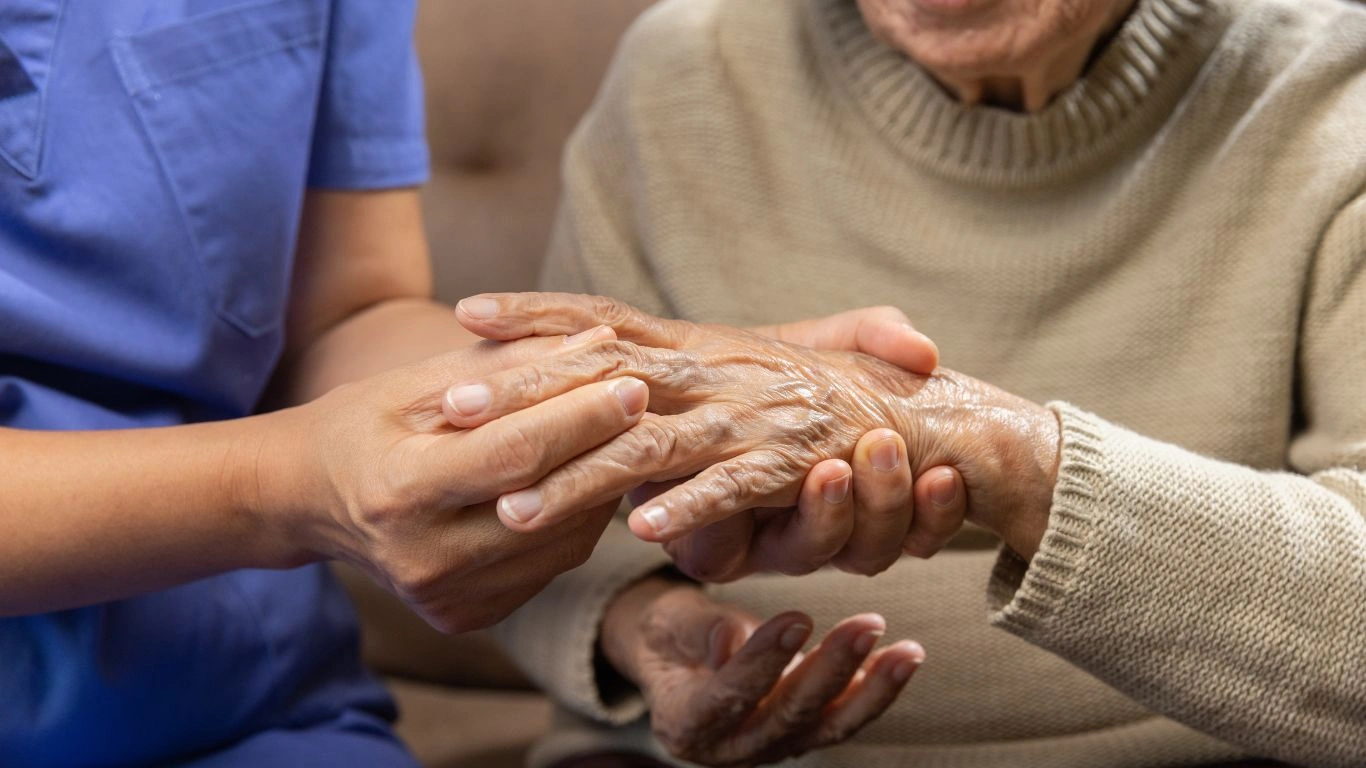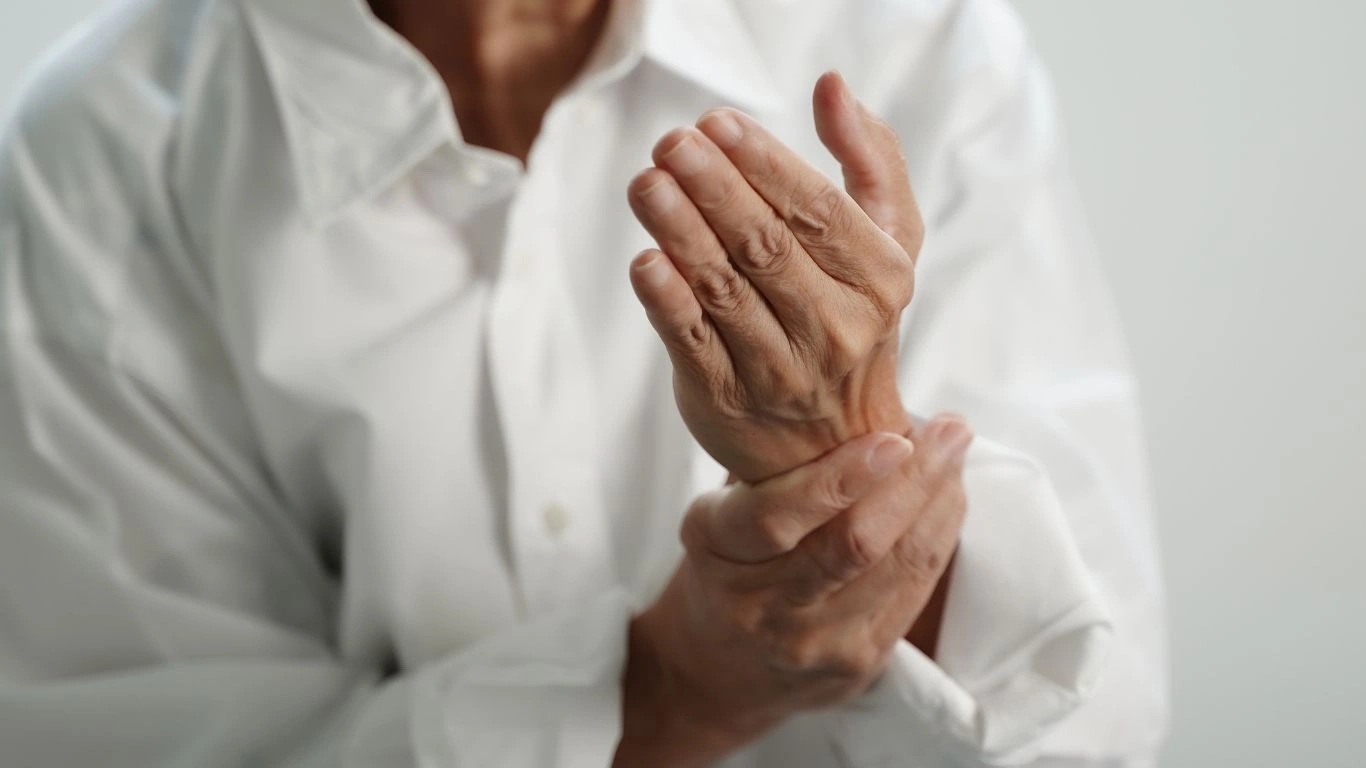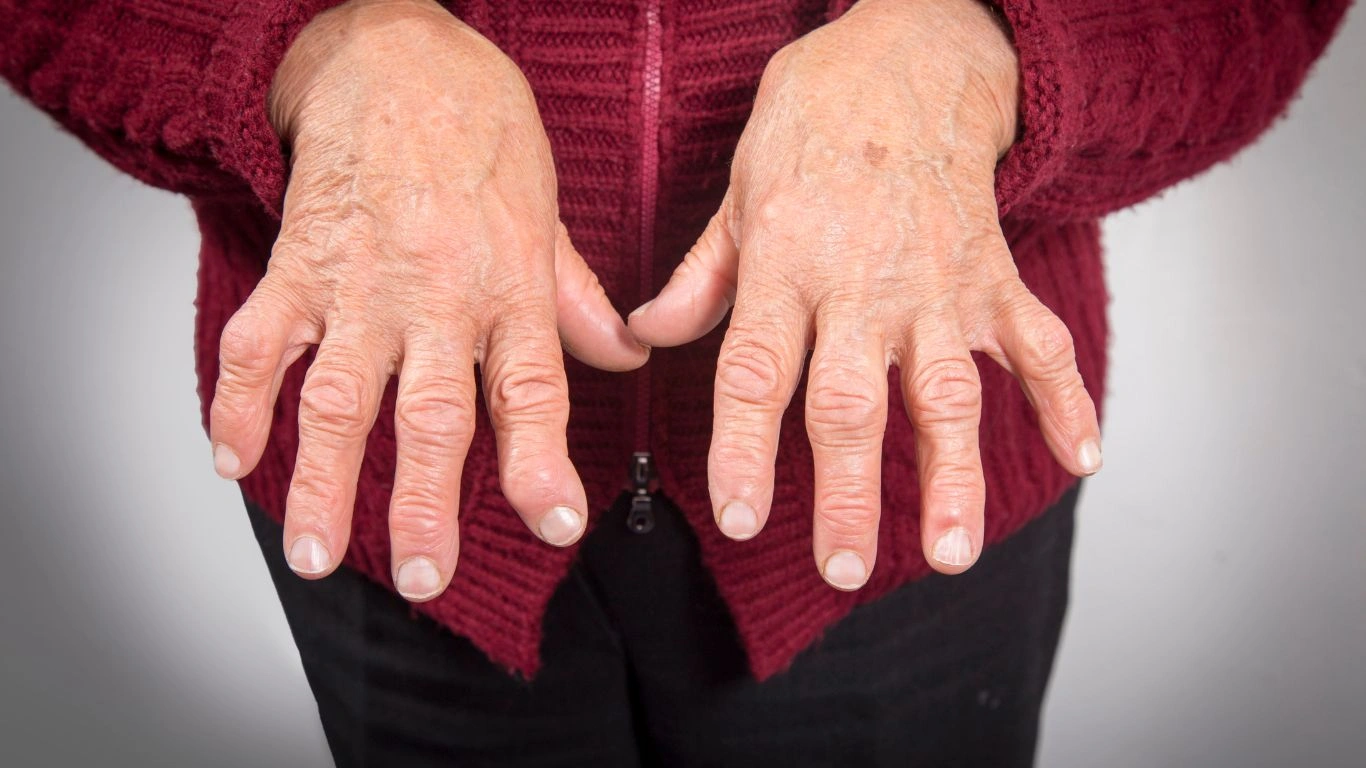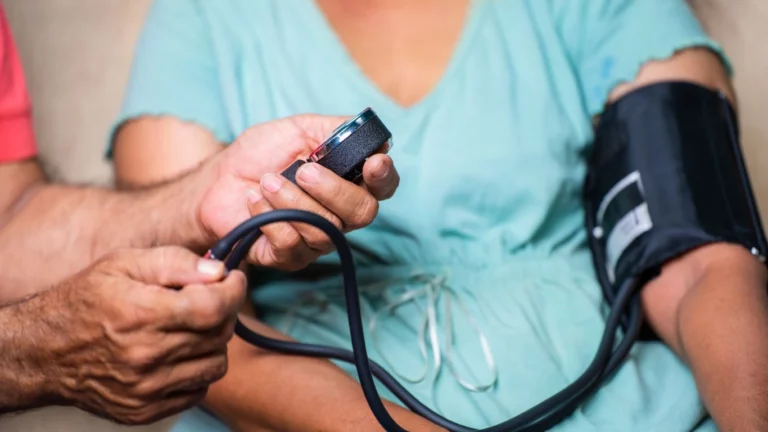Understanding RA and Jaw Pain Explained: Causes and Care
If you’ve ever experienced an aching jaw that just won’t quit and you’ve been diagnosed with rheumatoid arthritis (RA), you might be surprised to learn that the two could be connected. RA and jaw pain explained—that’s exactly what we’re diving into today. As a rheumatology nurse practitioner, I’ve seen patients caught off guard by this lesser-known symptom, often blaming it on dental issues or stress. But the truth is, RA doesn’t always play by the rules, and the temporomandibular joint (TMJ), like any other synovial joint, isn’t off-limits.
How RA Affects the Jaw Joint (TMJ)

RA Isn’t Just About Hands and Knees
Most folks associate RA with hands, wrists, and knees—and that’s fair, because those are the common hot spots. But here’s something I often share with my patients: RA is a systemic autoimmune condition, meaning it can strike any joint, including your jaw. The TMJ is just as vulnerable to inflammation as any other joint lined with synovium.
I’ve had patients come in complaining of morning jaw stiffness, pain while chewing, or even a clicking sound. It often takes some careful sleuthing to connect the dots, especially since these symptoms can mimic TMJ disorders or dental issues. But once we understand the root cause is autoimmune, everything clicks (pun intended!).
Inflammation in Action
RA causes chronic inflammation in the joint lining, leading to pain, stiffness, and—over time—joint damage. When this happens in the jaw, patients might notice:
- Difficulty opening the mouth fully
- Jaw locking or clicking
- Pain when chewing or speaking
- Swelling near the ear
- Changes in bite alignment
I remember one patient in particular—a young woman in her 30s—who had been bounced around from dentist to ENT to physical therapist before we finally nailed down that RA was behind her jaw pain. Her relief in just having a name for it was palpable. That’s why education and awareness matter.
Why Jaw Pain Often Goes Unnoticed in RA

It’s Often the Last Place We Think To Look
Let’s face it: jaw pain isn’t always the first thing that gets linked to rheumatoid arthritis. For starters, the TMJ is a small and complex joint, tucked right in front of your ears. When RA flares there, the symptoms can easily be misattributed to grinding teeth, sinus infections, or tension headaches.
Even many healthcare providers might not immediately suspect RA involvement unless jaw symptoms are persistent or coincide with known RA flare-ups. Personally, I always ask my patients about jaw discomfort during follow-ups, especially if they’ve been struggling with other joint issues. It’s often in those conversations that we uncover subtle signs of TMJ involvement.
Subtle Signs That Can Be Easy to Miss
RA-related jaw pain tends to come on gradually and may not be constant. You might notice it more in the mornings or after chewing tough foods. Some patients tell me they assumed it was just stress or grinding, which makes sense—those are super common culprits. But when anti-inflammatory meds help ease both hand and jaw pain? That’s usually a big clue.
- Morning stiffness in the jaw
- Jaw fatigue by the end of the day
- Unusual popping sounds or sensations
- Pain radiating toward the ear or temple
Pro tip from my clinic: If you’re experiencing jaw pain and have RA, keep a simple symptom journal. Track when the pain appears, how long it lasts, and what seems to trigger it. These notes can really help us zero in on whether RA is the culprit.
What Triggers Jaw Pain in RA Patients?

Flares, Stress, and the Usual Suspects
Just like RA symptoms elsewhere, jaw pain can ebb and flow. Flares are a big factor—when your immune system gets revved up, it can zero in on your jaw as much as your knees or wrists. But here’s something interesting I’ve seen: even low-level, chronic stress can contribute. Clenching your jaw without realizing it? That puts extra pressure on an already inflamed joint.
Other possible triggers include:
- Poor sleep
- Skipping medications or inconsistent treatment
- Chewing gum or eating tough meats
- Cold, damp weather (many of my patients swear by this one)
That said, every patient is different. I’ve met folks whose jaw pain is their first sign of a flare coming on, and others who only notice it occasionally. Either way, understanding your patterns is half the battle.
Managing RA-Related Jaw Pain Day-to-Day

Daily Life with TMJ Pain from RA
Living with rheumatoid arthritis is tough enough—but when your jaw joins the party, it can seriously throw off your day. From enjoying meals to chatting with friends, jaw pain can creep in and mess with the simplest activities. I’ve had patients tell me they avoid certain foods entirely just to dodge the ache. Honestly, I’ve even done it myself on days where chewing feels like a full workout.
So what can you do when your TMJ is flaring up from RA? Thankfully, there are several strategies that can help reduce discomfort and protect your jaw in the long run. Some are medically focused, and some are just good ol’ lifestyle tweaks. I often walk my patients through these at their appointments, tailoring things based on what’s realistic for their daily life.
Practical Tips That Actually Help
Here are some tried-and-true jaw-saving strategies I recommend all the time:
- Heat therapy: A warm compress or heating pad over the jaw can ease stiffness and improve blood flow. This is my personal favorite go-to when things start to tighten up.
- Soft food diet during flares: Think smoothies, soups, mashed veggies—basically anything that doesn’t require much chewing.
- Jaw stretches and gentle exercises: These can maintain mobility and prevent locking. Just be sure to go slow and stop if it hurts.
- Anti-inflammatory medications: Whether it’s NSAIDs or your RA prescriptions, keeping inflammation controlled systemically helps protect your TMJ, too.
- Night guards: If grinding or clenching is part of the issue (and it often is!), a dentist-made mouth guard can make a world of difference.
One small tip that surprised me: using a soft toothbrush and not opening the mouth too wide while brushing or yawning can actually spare your jaw a lot of stress. Who knew, right?
When to See a Specialist About RA and Jaw Pain

Don’t Just Tough It Out
Here’s something I tell all my patients—and I’ll say it here too: jaw pain from RA is not something you just have to “deal with.” If it’s interfering with eating, speaking, or sleeping, it’s time to bring it up to your rheumatology team. The jaw is often overlooked in standard RA evaluations, but that doesn’t mean it’s not important.
In fact, for stubborn or worsening symptoms, it might be time to loop in other specialists. Depending on your situation, you might benefit from:
- A rheumatologist who has experience with TMJ involvement
- A physical therapist trained in TMJ dysfunction
- A dentist or oral surgeon who can assess jaw structure and bite alignment
- Imaging studies like MRI or CT to assess joint damage
One of my long-time patients had jaw issues that slowly got worse over a couple of years. It wasn’t until we got an MRI that we saw clear joint erosion in her TMJ. That changed our treatment plan entirely and got her started on a biologic, which made a huge difference.
RA and Jaw Pain Explained Through Imaging
Sometimes, you need to see what’s going on under the surface. Imaging like MRIs or panoramic dental X-rays can be really helpful to evaluate the condition of the jaw joint. This helps us make informed decisions—whether to adjust meds, add therapy, or consider injections for localized relief.
Treatment Options Beyond Meds

It’s Not Always About Popping a Pill
While meds like DMARDs and biologics are essential for controlling systemic inflammation, jaw pain sometimes needs a little extra TLC. When conservative methods don’t cut it, here are a few options I’ve seen help:
- Corticosteroid injections: These can provide targeted relief in the jaw joint, especially during a flare.
- Physical therapy: Specific TMJ exercises and manual techniques can really ease discomfort and improve function.
- Platelet-rich plasma (PRP) therapy: Still being studied, but some promising results are showing up in clinical settings.
- Surgical interventions: Rare, but in advanced cases with severe joint destruction, surgery may be discussed as a last resort.
Quick note from experience: Many of my patients hesitate at the mention of jaw injections, but those who try it often report significant pain relief. It’s all about weighing the benefits and having a good conversation with your care team.
Tailoring Treatment to You
Not every treatment fits every patient—and that’s something I always stress. RA is personal. TMJ involvement can look different from one person to the next, so building a care plan that fits your lifestyle, pain levels, and goals is key. Whether it’s adjusting your meds or adding jaw exercises to your morning routine, the goal is to improve quality of life—not just mask symptoms.
Living Well with RA and Jaw Pain: Practical Advice from the Front Lines

Balancing Symptoms and Life
Managing rheumatoid arthritis is a marathon, not a sprint. When your jaw gets involved, it can feel like you’ve got an extra layer of complexity to handle. From my years working closely with RA patients, I’ve learned that staying proactive is the secret sauce. Waiting for the pain to become unbearable usually just means more damage down the line.
One thing I always emphasize is the importance of open communication. Whether you’re with your rheumatologist, dentist, or physical therapist, keep those conversations going. Share how your jaw feels, how it impacts your daily activities, and don’t shy away from asking about new treatment options. Patients who actively engage in their care almost always fare better.
Self-Care Tips That Actually Make a Difference
Here are some real-world, easy-to-apply tips I share often:
- Mind your posture: Believe it or not, slouching or craning your neck forward can put extra pressure on your jaw. Sitting up straight and adjusting your workstation ergonomics can ease some of that strain.
- Stress reduction: Stress is a known trigger for RA flares and jaw clenching alike. Techniques like deep breathing, meditation, or even gentle yoga can help calm both mind and muscles.
- Warm salt water rinses: A simple, soothing way to reduce inflammation around the jaw and mouth.
- Avoid extreme jaw movements: No wide yawns or chewing gum for long periods—sounds simple but can make a big difference.
- Regular check-ins with your care team: Schedule appointments not just when you’re in pain but as part of routine care to catch issues early.
I’ll be honest—some days are better than others. But having a toolkit of strategies means you’re better prepared when the jaw pain tries to take center stage.
The Bigger Picture: Why Understanding RA and Jaw Pain Matters

It’s About More Than Just the Jaw
Understanding the connection between RA and jaw pain goes beyond symptom management. It helps highlight the systemic nature of rheumatoid arthritis and reminds us that every joint counts. The TMJ may be small, but when it’s inflamed, it can affect your overall well-being—impacting nutrition, communication, and even sleep quality.
From my clinical experience, educating patients about this connection leads to better outcomes. When patients know what to watch for and feel empowered to act early, they often avoid unnecessary suffering and joint damage. And that’s the heart of E-E-A-T—expertise, experience, authority, and trust—working together to improve lives.
Advocating for Yourself in Healthcare
One last nugget from the trenches: don’t be afraid to advocate for yourself. Sometimes RA jaw pain is overlooked or misdiagnosed, but your voice is powerful. If you feel your concerns aren’t being taken seriously, consider seeking a second opinion or asking for a referral to a specialist familiar with TMJ involvement in RA.
Remember, you know your body best. And combined with a skilled healthcare team, you can navigate the challenges of RA and jaw pain with confidence.
References and Resources
- American College of Rheumatology
- Arthritis Foundation
- American Academy of Orofacial Pain
- National Institute of Arthritis and Musculoskeletal and Skin Diseases
Disclaimer
The information provided here is intended for educational purposes only and is not a substitute for professional medical advice, diagnosis, or treatment. Always seek the advice of your physician or qualified healthcare provider with any questions you may have regarding a medical condition. Do not disregard professional medical advice or delay seeking it because of something you have read in this article.

Tarra Nugroho is a dedicated Nurse Practitioner with a strong foundation in family and preventive care. She brings both compassion and clinical expertise to her practice, focusing on patient-centered care and health education. As a contributor to Healthusias.com, Tarra translates medical knowledge into clear, empowering articles on topics like women’s health, chronic disease management, and lifestyle medicine. Her mission is simple: help people feel seen, heard, and informed—both in the clinic and through the content she creates. When she’s not caring for patients, Tarra enjoys weekend hikes, plant-based cooking, and curling up with a good health podcast.






